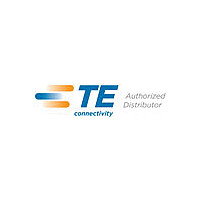MA4P506-30 TE Connectivity, MA4P506-30 Datasheet - Page 6

MA4P506-30
Manufacturer Part Number
MA4P506-30
Description
Manufacturer
TE Connectivity
Datasheet
1.MA4P506-30.pdf
(6 pages)
Specifications of MA4P506-30
Lead Free Status / RoHS Status
Supplier Unconfirmed
6
ADVANCED: Data Sheets contain information regarding a product M/A-COM Technology Solutions
is considering for development. Performance is based on target specifications, simulated results,
and/or prototype measurements. Commitment to develop is not guaranteed.
PRELIMINARY: Data Sheets contain information regarding a product M/A-COM Technology
Solutions has under development. Performance is based on engineering tests. Specifications are
typical. Mechanical outline has been fixed. Engineering samples and/or test data may be available.
Commitment to produce in volume is not guaranteed.
Silicon PIN Chips
Die Handling and Mounting Information
Handling: All semiconductor chips should be handled with care to avoid damage or contamination
from perspiration, salts, and skin oils. The use of plastic tipped tweezers or vacuum pickup is
strongly recommended for the handling and placing of individual components. Bulk handling should
ensure that abrasion and mechanical shock are minimized.
Die Attach Surface: Die can be mounted with an 80Au/Sn20, eutectic solder preform, RoHS
compliant solders or electrically conductive silver epoxy. The metal RF and D.C. ground plane
mounting surface must be free of contamination and should have a surface flatness of < ±0.002”.
Eutectic Die Attachment Using Hot Gas Die Bonder: A work surface temperature of 255
recommended. When hot forming gas (95%N/5%H) is applied, the work area temperature should be
approximately 290
than 10 seconds.
Eutectic Die Attachment Using Reflow Oven: Refer to pages 5-7 of
“Surface Mounting Instructions” at
Electrically Conductive Epoxy Die Attachment: A controlled amount of electrically conductive,
silver epoxy, approximately 1–2 mils in thickness, should be used to minimize ohmic and thermal
resistance. A thin epoxy fillet should be visible around the perimeter of the chip after placement to
ensure full area coverage. Cure conductive epoxy per manufacturer’s schedule. Typically 150°C for
1 hour.
Wire and Ribbon Bonding: The die anode bond pads have a Ti-Pt-Au metallization scheme, with a
final gold thickness of 1.0 micron. Thermo-compression or thermo-sonic wedge bonding of either
gold wire or ribbon is recommended. A bonder heat stage temperature setting of 200
temperature of 150°C and a force of 18 to 50 grams is suggested. Ultrasonic energy may also be
used but should be adjusted to the minimum amplitude required to achieve an acceptable bond.
Excessive energy may cause the anode metallization to separate from the chip. Automatic ball or
wedge bonding may also be used.
For more detailed handling and assembly instructions, see
“Bonding and Handling Procedures for Chip Diode Devices” at
o
C. The chip should not be exposed to temperatures greater than 320
www.macomtech.com
M/A-COM Technology Solutions Inc. and its affiliates reserve the right to make
changes to the product(s) or information contained herein without notice.
• North America Tel: 800.366.2266 • Europe Tel: +353.21.244.6400
• India Tel: +91.80.43537383
for recommended time-temperature profile.
Visit www.macomtech.com for additional data sheets and product information.
Application Note
www.macomtech.com.
Application Note
M541,
• China Tel: +86.21.2407.1588
o
o
C for more
C, tool tip
M538,
o
C is
V17

















